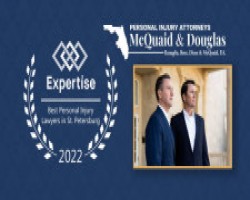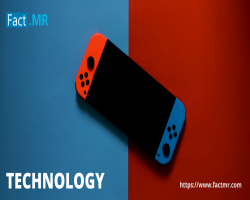Canopy Market Material, Application, End-Use, Regional Analysis, and Key Trends (2025-2034)

The global canopy market size plays a significant role in both residential and commercial sectors, providing versatile solutions for outdoor protection, shade, and aesthetic appeal. Canopies are utilized in a wide range of applications, including event venues, residential patios, and commercial buildings. The global canopy market size reached around USD 1.98 billion in 2024. The market is projected to grow at a CAGR of 3.70% between 2025 and 2034, reaching nearly USD 2.85 billion by 2034. This growth is driven by increasing demand for outdoor living spaces, the rise of event-based services, and the adoption of sustainable materials. This blog post delves into the key factors driving the market, the materials used in canopy production, and emerging trends that will shape the market over the next decade.
Market Overview
A canopy is a covering that provides shelter or shade, typically made from materials such as fabric or metal. They are used in a wide range of applications, from residential backyards to large-scale commercial and event spaces. The canopy market has seen steady growth as demand rises for shaded outdoor areas, event shelters, and functional yet aesthetic architectural features. With growing urbanization and an increase in outdoor activities, both residential and commercial consumers are opting for canopies to enhance the comfort and utility of their spaces. The market’s projected growth through 2034 reflects the increasing importance of outdoor spaces for both leisure and business purposes.
By Material
Polytetrafluoroethylene (PTFE)
Polytetrafluoroethylene (PTFE) is a high-performance polymer used in canopy materials due to its durability, weather resistance, and fire-retardant properties. PTFE is often used in applications where long-lasting performance and resilience are required, such as in large commercial structures and public spaces. The high cost of PTFE is balanced by its remarkable longevity and minimal maintenance requirements. PTFE-based canopies are commonly used in airports, shopping malls, and sports arenas due to their ability to withstand harsh environmental conditions.
Ethylene Tetrafluoroethylene (ETFE)
ETFE is another advanced polymer that has gained popularity in canopy construction due to its lightweight, flexible, and highly durable nature. ETFE canopies are often used in large structures, including stadiums and exhibition halls. They are transparent, allowing natural light to penetrate while offering protection from the elements. ETFE’s resistance to UV degradation makes it an ideal choice for long-term applications, and its transparency makes it aesthetically appealing in modern architectural designs. The global demand for ETFE in canopies is expected to grow as urban architecture trends lean toward modern, sustainable, and energy-efficient designs.
Polyvinyl Chloride (PVC)
Polyvinyl chloride (PVC) is one of the most widely used materials in the canopy market, primarily due to its affordability and ease of use. PVC canopies are commonly seen in residential areas for patios, gardens, and swimming pool covers. PVC canopies are also prevalent in commercial settings, such as restaurants, cafés, and shops that require outdoor shading solutions. While PVC is less durable than materials like PTFE or ETFE, it remains a cost-effective and practical option for many applications. As consumer demand for affordable and versatile canopies continues to rise, the PVC segment will continue to thrive in the market.
Polyester Cloth
Polyester cloth is another popular material used in the canopy market, especially for smaller-scale applications such as event tents and temporary structures. Polyester is lightweight, easy to maintain, and offers a wide range of colors and designs, making it a favorite for outdoor events such as weddings, festivals, and trade shows. The low cost of polyester cloth makes it an attractive option for temporary and short-term installations, and it is highly customizable to meet specific event or aesthetic needs. However, polyester cloth may have limitations in terms of durability compared to more advanced materials like PTFE and ETFE.
Others
In addition to the materials mentioned above, other materials such as high-density polyethylene (HDPE), acrylic fabrics, and aluminum are also used for canopies. These materials cater to specialized applications that require specific characteristics, such as enhanced strength, UV resistance, and aesthetic appeal. The rise of eco-friendly materials is also influencing the development of new canopy products that are sustainable and environmentally friendly.
By Application
Shade Canopy
Shade canopies are among the most common and widely used types of canopies, primarily in residential and commercial settings. These canopies provide protection from the sun and weather, making them ideal for outdoor spaces such as patios, gardens, and parking lots. As more people invest in their outdoor living areas, the demand for shade canopies is expected to increase. Additionally, businesses such as restaurants, cafés, and retail stores use shade canopies to create comfortable outdoor seating areas that attract customers.
Event or Large Canopy
Event or large canopies are designed for temporary or long-term use in public events, festivals, trade shows, and exhibitions. These canopies often need to be large enough to shelter hundreds or thousands of people and must be constructed with materials that are durable and resistant to the elements. As the events and hospitality industries continue to expand, particularly in developing economies, the demand for large canopies will see significant growth. This application segment is projected to contribute notably to the overall market growth.
Others
Other canopy applications include architectural canopies, which are installed in buildings to enhance the aesthetic appeal or provide shelter at entrances. Canopies are also used in industrial settings to provide shade for workers or machinery, especially in hot climates. The versatility of canopies means they have applications in various niche markets, all of which contribute to the growth of the industry.
By End-Use
Residential
In the residential market, canopies are primarily used for outdoor living spaces such as gardens, patios, and backyards. As urban dwellers seek to maximize their outdoor spaces, residential canopies are becoming more popular. Homeowners are increasingly investing in durable and attractive canopy solutions to create functional and comfortable outdoor areas. The growing trend of creating “outdoor rooms” will drive demand for residential canopies over the next decade.
Non-Residential
Non-residential end-users include commercial, institutional, and industrial sectors. Canopies in commercial spaces, such as hotels, restaurants, and retail stores, are used to improve the functionality and aesthetics of outdoor areas. In industrial settings, canopies may be used to cover machinery or provide shade for employees. As businesses seek to enhance customer experiences and invest in energy-efficient outdoor solutions, the non-residential sector will remain a significant driver of market growth.
Regional Analysis
North America
North America is a key market for canopies, driven by the high demand for both residential and commercial applications. The U.S. and Canada have seen significant investments in outdoor living spaces, and the trend toward creating versatile outdoor environments is expected to continue. The region’s robust hospitality and event management industries also drive the demand for large canopies.
Europe
Europe is another major market for canopies, with a focus on eco-friendly and sustainable materials. The region has a strong preference for modern, energy-efficient designs, particularly in urban environments. Canopies are increasingly used in commercial buildings, public spaces, and event venues to enhance the functionality and visual appeal of outdoor areas.
Asia-Pacific
Asia-Pacific is the fastest-growing region in the global canopy market. The rapid urbanization in countries like China, India, and Japan is fueling demand for both residential and commercial canopies. Additionally, the region’s booming event industry and growing outdoor recreational trends further contribute to the market’s expansion. The availability of affordable materials also plays a role in driving the adoption of canopies in this region.
Latin America & Middle East & Africa
Emerging economies in Latin America, the Middle East, and Africa are expected to see significant growth in the canopy market. As infrastructure projects increase and tourism and event industries expand, the demand for both temporary and permanent canopy solutions will rise. These regions also exhibit a growing preference for durable and high-performance materials due to harsh climatic conditions.
Market Dynamics
SWOT Analysis
- Strengths: Versatility, wide range of material options, growing demand in both residential and commercial sectors.
- Weaknesses: High initial costs for advanced materials (e.g., PTFE, ETFE), limited awareness in some regions.
- Opportunities: Increased urbanization, rise of outdoor living, growing event industry, demand for sustainable materials.
- Threats: Competition from alternative structures (e.g., pergolas, retractable roofs), raw material price fluctuations, economic downturns.
Competitive Landscape
The global canopy market is highly competitive, with key players such as Shelter Systems, Awntech, and MakMax Australia dominating the industry. These companies focus on innovation, quality, and customization to meet the diverse needs of their customers. Companies are also increasingly adopting sustainable practices and materials to meet growing environmental concerns and consumer preferences.
Key Trends and Developments
Several key trends are shaping the future of the canopy market. The demand for eco-friendly and sustainable canopy materials is on the rise, driven by consumer and regulatory pressure. Technological advancements in canopy design, including retractable systems and smart canopies, are also gaining traction. As the events industry continues to thrive, customization and versatility in canopy designs will remain important market drivers.
What's Your Reaction?




















